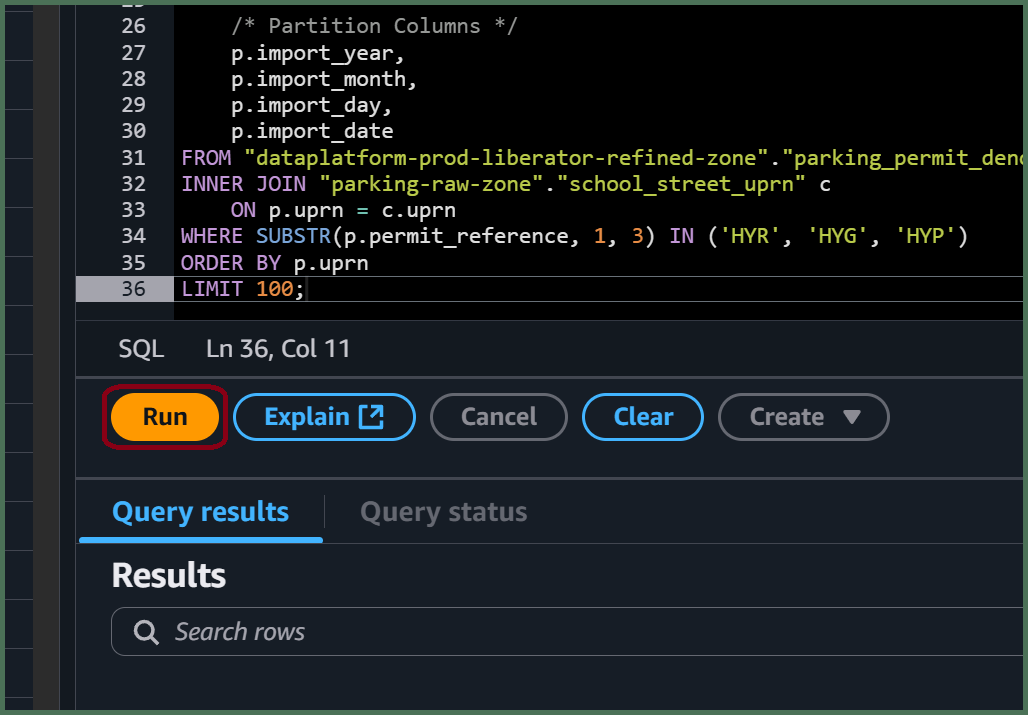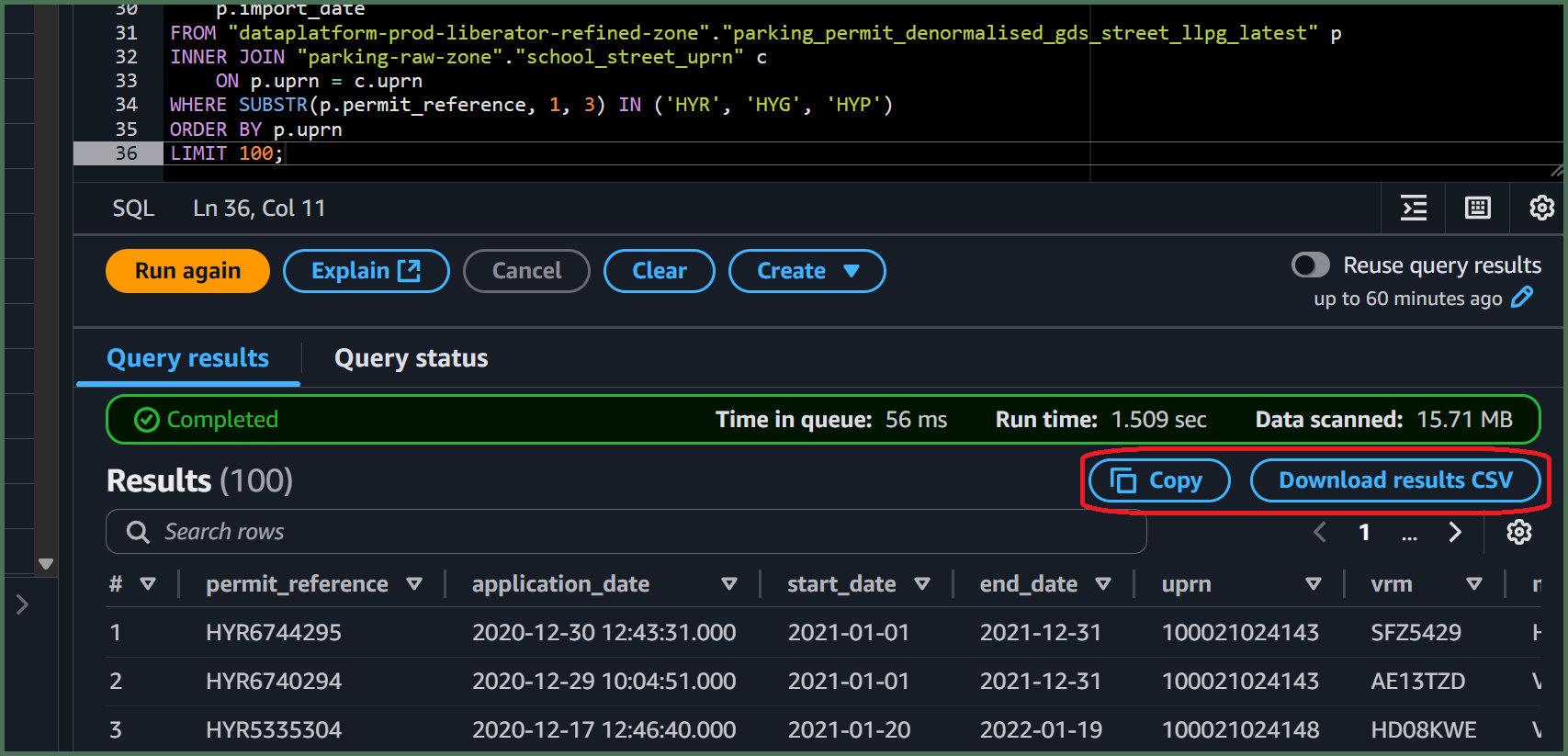How will I query and analyze my [service]'s data with Amazon Athena?

1. Access Amazon Athena
🖱 In your web browser, log in to your AWS account, navigate to the AWS Management Console, and open Amazon Athena.
👉 First time Amazon Athena users should start here ► 📚Amazon Athena
2. Select your [service workgroup]
🖱 Ensure you have selected your [service workgroup] from the list-box next to “Workgroup”.
👉 Your Service Terms[] are defined in your welcome document stored in your [service access group]'s **► ** Google Drive subfolder.
3. Explore your database
🖱 Find and select the [service zones] database which is equivalent to your [service database], from the list-box under "Database" on the left side of the Athena interface.
🖱 Expand the list under "► Tables" to reveal the database objects there.
👁 You should observe your [service database] equivalent tables, suffixed with _latest.
🖱 Click "🞧" adjacent a table name with the suffix _latest.
👁 You should observe column names and data types, equivalent to the same table in your [service database].
4. Familiarize yourself with SQL queries
🕮 You will need to understand the basic concepts and requirements of writing SQL queries. This includes knowing how to select columns, filter data, join tables, etc.
👉 There is a comprehensive guide to help you write Athena SQL queries provided here ► 📚Prototype simple transforms
👉 You can also learn more about using Amazon Athena ► here
5. Run SQL queries
🖱 Use the SQL query editor in Amazon Athena to write and run queries involving tables and columns equivalent to those in your original [service database].
Fig. 5 
6. Analyze your data
👁 Review the results of your SQL queries to find answers to your questions about your [service database].
Fig. 6 
🖱 You can copy results to the clipboard.
🖱 You can download the results into a CSV file.
"We ♡ your feedback!"

👉 Please use this link ► DAP⇨flow UX Feedback / query-my-service-data
-
Your feedback enables us to improve DAP⇨flow and our Data Analytics Platform service.
-
We encourage all our users to be generous with their time, in giving us their recollections and honest opinions about our service.
-
We especially encourage our new users to give feedback at the end of every DAP⇨flow📚Migration onboarding task because the quality of the onboarding experience really matters.
☝ Please use this link to help us understand your user experience!
📚UX Criteria
- AWS Management Console user
- Amazon Athena user
- Hackney
[service]Data Analyst - Hackney
[service database]user
How will I query and analyze my [service]'s data with Amazon Athena?
Measures the behavior of Amazon Athena when users' run working SQL queries:
Given in my web browser, I have accessed Amazon Athena
~and I have selected my [service workgroup]
~and Amazon Athena shows a [service zones] database equivalent to my [service database], having equivalent tables suffixed with _latest, with the same columns and associated data types
~and I am familiar with the concepts and basic requirements of writing an Amazon Athena SQL query
When I run my SQL query containing given those tables and columns
Then I should be able to find answers to my questions about my [service database]
~and I can copy results to the clipboard
~and I can download the results into a CSV file
Scale of 2 to 5 ~and flow features.